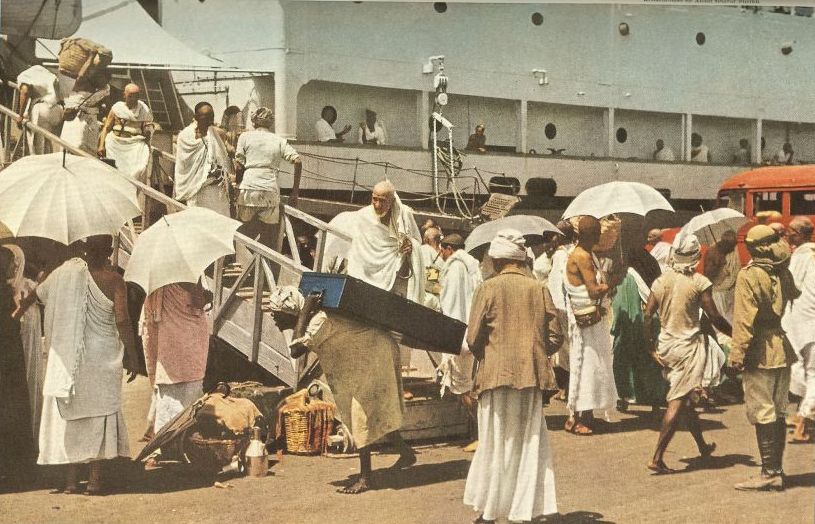These fascinating photos from 1880 feature pilgrims from 10 countries during Hajj. Back then, before the advent of modern transport such as commercial air travel, the journey to Hajj was far more difficult and perilous and these pilgrims would have undertaken journeys of weeks or months to reach Makkah.
An interesting observation about these photos is the different clothing the pilgrims are wearing reflecting the customs of their place of origin. However during Hajj, such nationalities disappear as each person wears two pieces of un-stitched clothing making it difficult to identify their nationality. Hajj brings all nations and peoples together where the young, the old, the poor and the rich stand before Allah as equals.
These photos were taken when the Ottoman caliphate still existed and pilgrims were able to travel hassle free without passports and visas through border-less lands.
Basra, Iraq
Baghdad, Iraq
Aceh, Indonesia
Sumatra, Indonesia
Bahrain
Zanzibar
Yemen
Morocco
India
Bukhara, Uzbekistan
Makkah
Malaysia
Photos courtesy of: Museum of Islamic Art (MIA), Qatar
25 AMAZING PHOTOS FROM HAJJ 1953
Catch a glimpse of how it was like to perform Hajj in 1953. Though this was only just over 60 years ago, a lot has changed mainly due to the increase in the number of pilgrims going to perform Hajj.
Many pilgrims would travel to Makkah via a ferry or a ship, in those days commercial air travel was still in its early stages and it was not as widely available as it is today.
For those who could afford it, they would embark on their journey on board small planes from nearby countries.
Like today, coaches and buses would be used to transport pilgrims from place to place.
Muslims are only allowed to enter the places to perform Hajj.
Homes and hotels can be seen outside of the sacred mosque’s perimeter. Much of these historical buildings have had to be demolished to make way for the mosque’s expansion.
A busy street in Makkah. An Ottoman style minaret can be seen.
One of the entrances to the Masjid Al Haram.
Worshippers outside the Mosque’s entrance.
The Ka’ba and the Mataf area. There was no other floors back them.
A close up view of the Ka’ba.
Worshippers also were able to enter the Ka’ba.
Performing Tawaf was easier as it was not as crowded as it is today.
Markets and stalls near the Masjid Al Haram
Horse and carriage were used as a means of transport.
Pilgrims were able to choose the animals they wanted for Udhiyyah/Qurbani.
Pilgrims would keep their livestock with them during their Hajj.
Donkeys were used to transport carcasses of sacrificial animals.
In Mina, food would be cooked using fire and stove.
Pilgrims pray near their camels.

Tents can be seen pitched in Arafah next to mount Arafah.
The Jamarat used to be small pillars which would be stoned symbolising stoning of the devil.
A pilgrim has his hair shaved.
Pilgrims keep themselves cool by drinking ice cold fizzy drinks.
Photos courtesy of the National Geographic Magazine
















































You must be logged in to post a comment.